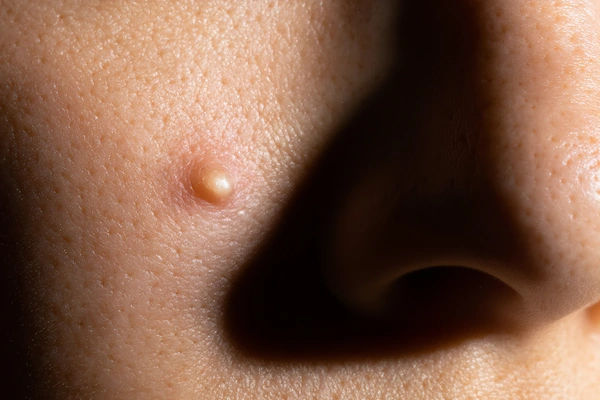- Male
- 27 Years
- 29/01/2025
I noticed that the redness has come back on my penis foreskin after using Candid B, which helped at first. The redness is mainly at the bottom of the foreskin near the penis head, but there are no ulcers and it doesn't itch. Should I be concerned about this recurring redness, or is it normal? What should I do next?
Answered by 1 Apollo Doctors
continue same medication until symptoms fully resolved
Dr. Shubham Suggests...
Consult a Dermatologist
Answered 04/07/2025
0
0

More Dermatology Health Queries
View allI'm only getting hives on my hands and feet. They start as small red dots and then spread out into a circle. It's super itchy, and even though I take antihistamines like cetrizine, they only give me temporary relief. Omnacortil works to clear them up, but I can't use it every day because of its side effects. What can I do about this?
To manage recurring hives on hands and feet, consider consulting a dermatologist or allergist to identify underlying causes, and explore alternative treatments like immunotherapy, sublingual immunotherapy, or medications like montelukast or cyclosporine, while also maintaining a symptom journal and avoiding potential triggers.
Answered by 1 Apollo Doctors
I've noticed these odd clusters of purple spots under both of my arms, and there are veins nearby them too. It's kind of freaking me out. Any idea why these might have shown up?
-The purple spots under your arms could be bruising or broken blood vessels, possibly from friction, tight clothing, or even minor pressure. It might also be related to circulation issues or inflammation. If they persist or worsen, it's a good idea to con
Answered by 1 Apollo Doctors
I've been dealing with jock itch since July this year, so it's been over two months. I admit I didnt take it seriously at first, but I started applying betadine frequentlylike every few hoursover the past week except when I'm sleeping. The rash has spread to almost my entire groin area, and I'm not sure if its actually improving. I havent had the chance to see a doctor yet, but I'm curious if this kind of jock itch can still be treated effectively with betadine. What do you think?
Applying betadine may help with disinfection, but for the treatment of jock itch, it is important to use antifungal medication. I recommend using an antifungal cream like Clotrimazole 1% cream. Additionally, you can take oral antifungal medication like Fluconazole. Make sure to keep the area clean and dry, wear loose-fitting clothes, and avoid sharing towels or clothing to prevent spreading the infection.
Answered by 1 Apollo Doctors
Disclaimer: Answers on Apollo 247 are not intended to replace your doctor advice. Always seek help of a professional doctor in case of an medical emergency or ailment.


